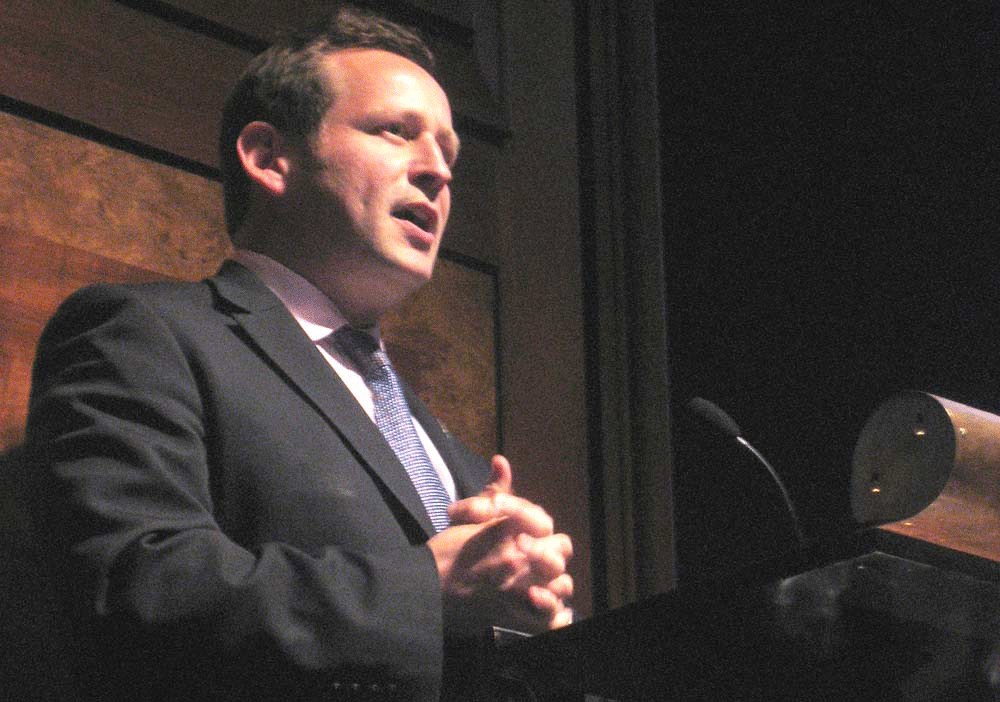Architects slam government for ruling out a formal response to Sir Terry FarrellŌĆÖs 60 recommendations

The Farrell Review of architecture is in danger of being ŌĆ£kicked into the long grassŌĆØ by government, leading architects have warned.
Architect Sir Terry Farrell launched his review this week, a year after he was asked by architecture minister Ed Vaizey to produce a report into architecture and the built environment.
The wide-ranging review contains 60 recommendations made across five areas - education, outreach and skills, design quality, cultural heritage, economic benefits, and built environment policy. Recommendations include reforms to the planning system, making architecture more accessible to poorer students, appointing a chief architect, holding an annual international festival of architecture and getting public figures to do more to popularise good design.
More than half of the recommendations call for some action by government or the wider public sector. However, on the launch of the review, Vaizey said the government would not make a formal response, but would take stock of progress in a yearŌĆÖs time. He said the review should kick-start a national debate and not just sit on a ministerŌĆÖs desk waiting to be implemented.
He said: ŌĆ£The first audience for these recommendations is not government but developers and I hope this will begin a process where developers engage with Terry Farrell.
ŌĆ£ItŌĆÖs not one manŌĆÖs ideas written on an envelope [ŌĆ”] ThereŌĆÖs been a year of consultation and thereŌĆÖs a huge amount of valuable material which I think developers will want to take on board.ŌĆØ
But Jack Pringle, former RIBA president and chair of the Construction Industry Council, said the governmentŌĆÖs decision not to formally respond to the review for a year - and likely after the next general election in May 2015 - meant the recommendations could be shelved.
ŌĆ£I should think Terry Farrell is rather disappointed with that because itŌĆÖs quite close to kicking it into the long grass,ŌĆØ he said.
ŌĆ£He and anyone who supports the measures will have to work quite hard to keep them alive into the next government. He is going to have his work cut out to do that.ŌĆØ
Farrell admitted he has been advised by the author of another government report, on the computer games industry, that he would need to ŌĆ£become a raving nutterŌĆØ to make his recommendations stick.
The review has been widely welcomed by the industry but many have raised questions about how key parts will be implemented.
Robin Nicholson, senior partner at Cullinan Studio, said: ŌĆ£VaizeyŌĆÖs not a big hitter and Farrell has done all this for free. ItŌĆÖs brilliant that he has, but it never had the support of the Treasury and unless you have that you are pissing in the wind.ŌĆØ
He cited the recommendation on reducing VAT on renovation projects as an example of a change thatŌĆÖs been widely lobbied for but repeatedly blocked by the chancellor.
Nicholson praised the reportŌĆÖs call for wholesale planning reform but queried how it would happen.
ŌĆ£IŌĆÖm all for this idea of proactive planning but it needs massive investment [ŌĆ”] It should be supported but sadly the political reality is thereŌĆÖs not the public money or will to support it,ŌĆØ he said.
Alex Ely, founding partner at Mae Architects and author of the London Housing Design Guide, said local authorities might find up-front investment in design-savvy planning teams paid for itself in the long run in reducing costly planning appeals. The bills for these can exceed ┬Ż100,000.
He praised the breadth of FarrellŌĆÖs review and said it was important that it was now ŌĆ£tested and challengedŌĆØ.
Robert Adam, founder of Adam Architecture, was also a fan of the proactive planning process and the Place design review concept.
But he said the chances of the review being ŌĆ£implemented in its entiretyŌĆØ were ŌĆ£pretty slimŌĆØ.
Peter Stewart, architect and founder of the Peter Stewart Consultancy, said VaizeyŌĆÖs failure to champion the report was a blow.
ŌĆ£Everyone would agree with what Terry is saying but how you make it happen is the challenge,ŌĆØ he said.
ŌĆ£ItŌĆÖs about culture change and you can do that without legislation. But itŌĆÖs all about money and political support.ŌĆØ
He said it was at local rather than government level that change was most likely to succeed, if ambitious civic leaders embraced the recommendations.
Key recommendation
- Government to appoint a chief architect to sit alongside the chief planner and chief construction adviser and establish a design leadership council with ministerial representation from the communities and culture departments
- A more proactive planning system to anticipate issues such as the national housing shortage or susceptibility to flooding
- Alternative routes to becoming an architect, such as apprenticeships
- An annual international festival of architecture in London
- Treasury should recognise building design as an export in the same way as it does manufacturing.
- Councils to ŌĆ£recruit more design-literate plannersŌĆØ




























No comments yet